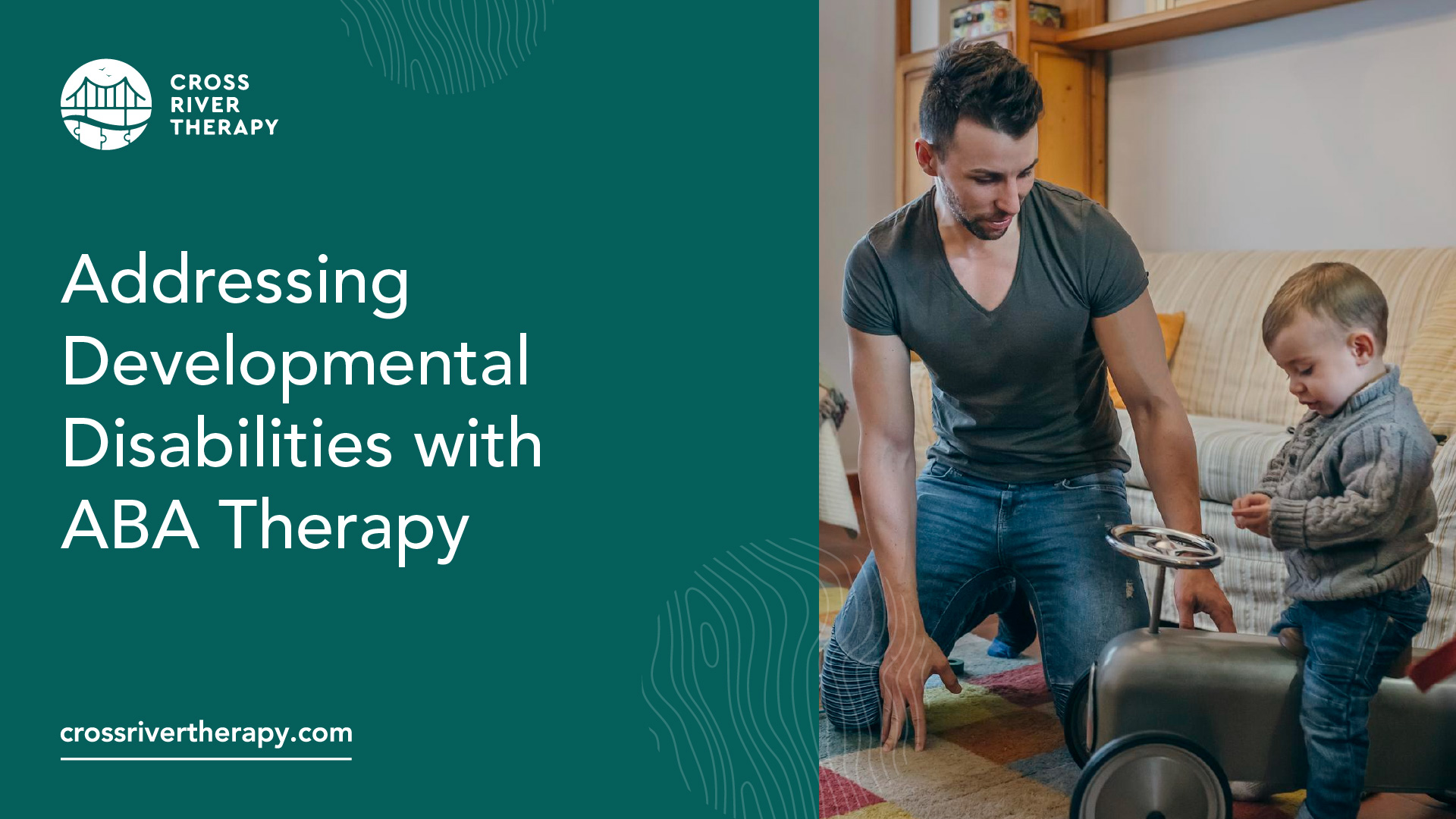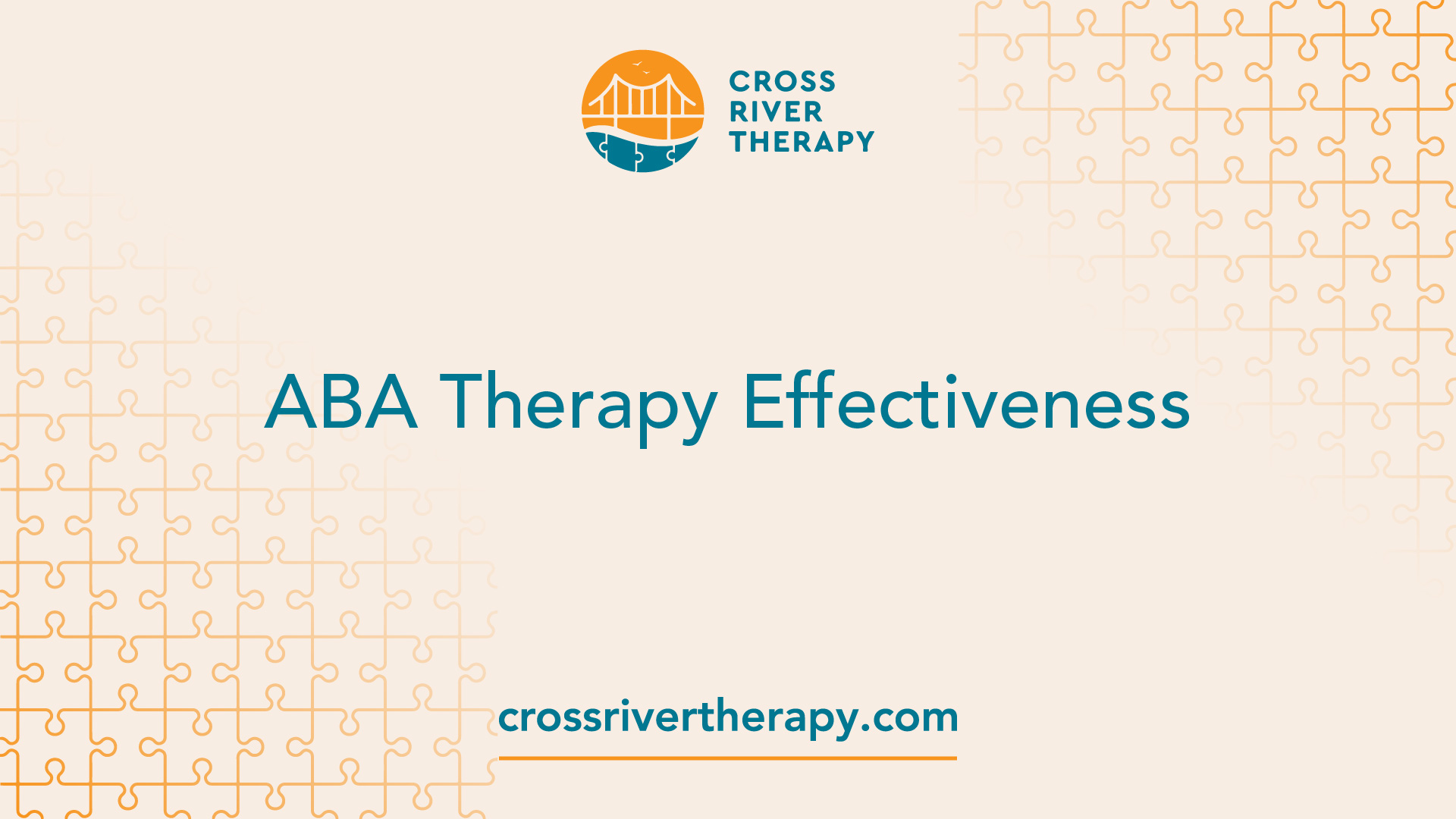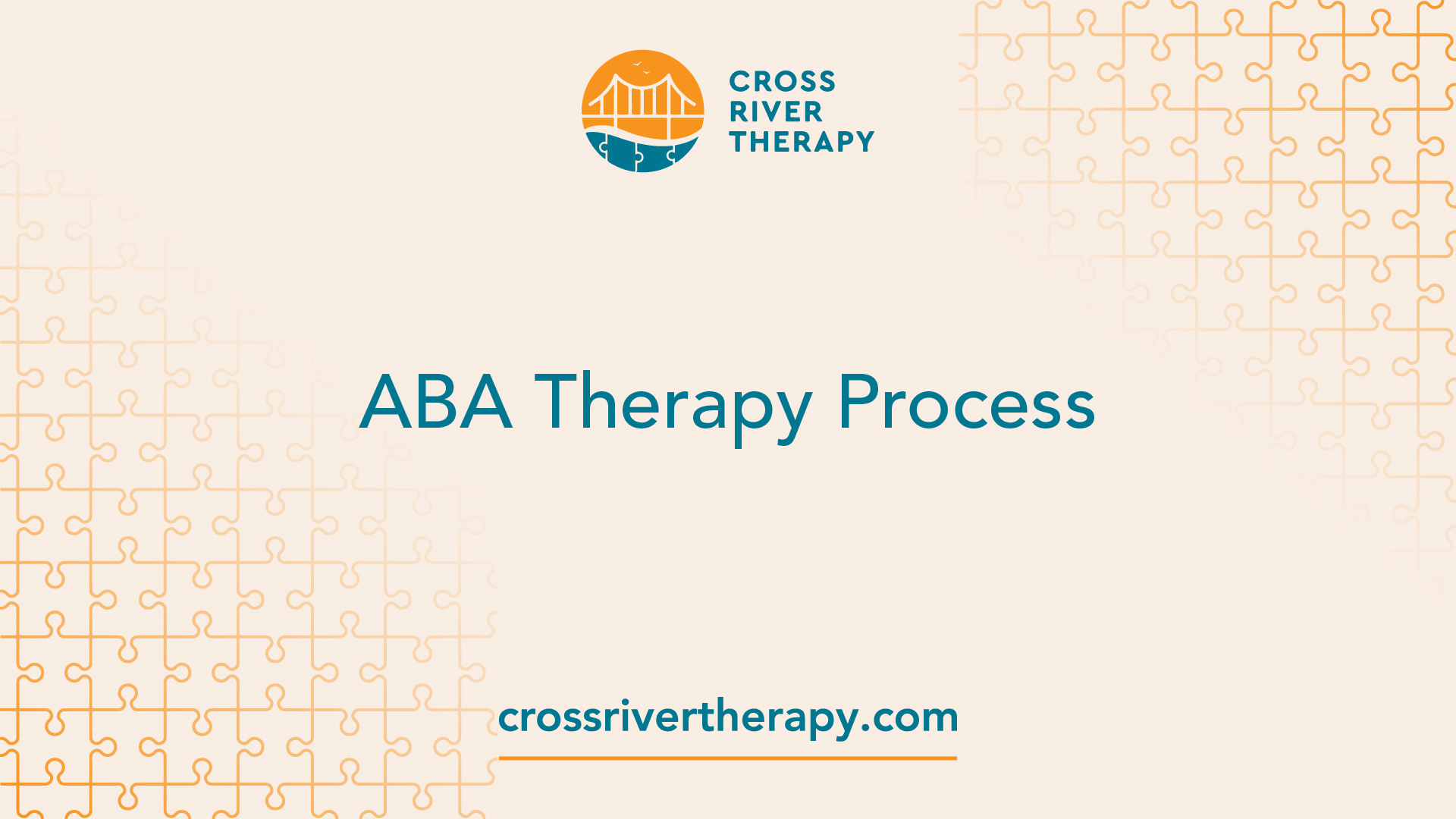Addressing Developmental Disabilities with ABA Therapy
Discover how ABA therapy for developmental disabilities enhances skills and promotes positive growth in children.
Understanding ABA Therapy
Applied Behavior Analysis (ABA) therapy is a highly regarded approach used for addressing developmental disabilities. It is particularly favorable among parents looking for effective interventions for their children diagnosed with autism.

Target Beneficiaries of ABA
ABA therapy is primarily utilized to support children with autism spectrum disorder (ASD). However, its benefits extend beyond autism. It can be effective for various developmental delays and conditions, including:
ConditionDescriptionAutism Spectrum Disorder (ASD)A neurological condition characterized by challenges in social skills, communication, and behavior.Intellectual DisabilitiesDevelopmental conditions that significantly limit cognitive functioning.Asperger’s SyndromePreviously considered a separate diagnosis, it now falls under autism spectrum disorders.Attention-Deficit/Hyperactivity Disorder (ADHD)A behavioral condition marked by issues with attention and impulsivity.Oppositional Defiant Disorder (ODD)A behavioral disorder characterized by a pattern of angry or irritable mood, argumentative behavior.Anxiety DisordersMental health conditions that result in excessive fear or worry.Down SyndromeA genetic condition causing developmental delays and physical challenges.
ABA therapy is considered one of the most often cited evidence-based interventions for the treatment of autism spectrum disorders [1]. This indicates its broad applicability and effectiveness over time.
Range of Developmental Delays
The range of developmental delays that can be addressed by ABA therapy is quite extensive. It includes a variety of cognitive and behavioral challenges that children may face. Some of these delays are:
Developmental DelayExamplesCommunication SkillsDifficulties in expressing thoughts, feelings, or needs effectively.Social SkillsChallenges in interacting appropriately with peers and understanding social cues.Daily Living SkillsDifficulties in performing everyday activities such as self-care, meal preparation, and hygiene.Academic DelaysStruggles with learning in a standard educational environment, impacting academic performance.
Certain studies and resources highlight the ability of ABA strategies to improve overall cognitive functions, language, social skills, and daily living skills in those with varying developmental challenges.
For parents seeking in-depth resources for their child’s development through ABA, exploring ABA therapy and autism resources and ABA therapy and autism centers can provide valuable guidance.
Benefits of ABA Therapy
ABA therapy provides significant advantages for children with developmental disabilities. Its structured approach focuses on enhancing skills and addressing various beneficiary conditions.
Skills Enhancement Approach
One of the primary benefits of ABA therapy is its emphasis on skill development. Through individualized treatment plans, ABA practitioners tailor interventions to meet the unique needs and abilities of each child. This leads to goal-oriented therapy that maximizes the potential for positive change.
Key areas of focus in skill enhancement through ABA therapy include:
Skill AreaDescriptionCognitionDeveloping problem-solving and decision-making skills.LanguageEncouraging speech and communication abilities.Social SkillsPromoting interactions with peers and understanding social cues.Daily LivingTeaching practical skills such as dressing, eating, and hygiene.
The comprehensive nature of these interventions makes ABA therapy a leading choice among parents, as it addresses various areas of development that are crucial for independence and social integration.
Diverse Beneficiary Conditions
Although ABA therapy is widely recognized for its effectiveness in treating autism spectrum disorders (ASD), it can also benefit individuals with a range of developmental delays and conditions. According to research, while insurance typically covers ABA therapy primarily for autism diagnoses, many other groups can experience positive outcomes through ABA-based interventions.
These conditions include:
ConditionPotential Benefits of ABA TherapyDevelopmental DelaysEnhances cognitive and adaptive functioning.Learning DisabilitiesImproves study habits and task completion.Attention Deficit Hyperactivity Disorder (ADHD)Aids in self-regulation and organization skills.Anxiety DisordersReduces avoidance behavior and anxiety responses.
The adaptability of ABA therapy allows it to cater to various developmental challenges, making it a versatile option for promoting skill enhancement across multiple beneficiary conditions. For more information about how ABA therapy can support children with autism, consider checking out our resources on aba therapy and autism resources.

ABA Therapy Effectiveness
Evidence-Based Practice
Applied Behavior Analysis (ABA) is recognized as an evidence-based best practice treatment. This endorsement comes from reputable organizations like the US Surgeon General and the American Psychological Association. Numerous studies support the effectiveness of ABA therapy in addressing the needs of children with autism spectrum disorders (ASD).
Research indicates that more than 20 studies demonstrate that intensive and long-term therapy based on ABA principles enhances outcomes for many children with autism. Improvements noted include significant gains in intellectual functioning, language development, daily living skills, and social skills.
Outcome AreasImprovement NotedIntellectual Functioning✔️ IncreasedLanguage Development✔️ EnhancedDaily Living Skills✔️ ImprovedSocial Skills✔️ Strengthened
Impact on Developmental Disorders
The effectiveness of ABA therapy extends beyond autism spectrum disorders. Evidence suggests that comprehensive and long-term ABA interventions result in substantial positive effects in various developmental areas. A meta-analysis by Virués-Ortega indicated that ABA interventions lead to medium to large improvements in language development, intellectual functioning, daily living skills acquisition, and social functioning in individuals with ASD compared to those who did not receive ABA treatment.
While some studies noted that ABA-based interventions might not significantly affect the overall symptoms of ASD, subgroup analyses have indicated potential effectiveness. Specifically, interventions focused on ABA principles and the Early Start Denver Model (ESDM) have shown promise in addressing general symptoms of autism.
ABA therapy is one of the most frequently cited evidence-based interventions for treating autism spectrum disorders. It has evolved significantly over the past 60 years, focusing on addressing deficits in areas like cognition, language, social skills, and daily living skills for children and youth with ASD. Parents seeking assistance can access resources through various ABA therapy and autism centers and explore ABA therapy and autism resources to learn more about the supportive approach of ABA for developmental disabilities.

ABA Therapy Process
Understanding the process of ABA therapy is vital for parents seeking effective interventions for their children diagnosed with autism. This section will cover the roles of therapists and the essential strategies used during therapy.
Therapist Role in ABA
In ABA therapy, the role of the therapist is crucial. A board-certified behavior analyst (BCBA) provides the overall direction for the therapy services. They design customized therapy programs based on individual assessment results. The day-to-day sessions are often conducted by registered behavior technicians (RBTs), who are trained and supervised by the BCBA [4].
The therapist’s responsibilities include:
RoleDescriptionBehavior AssessmentConduct assessments to identify specific behaviors and skills to be targeted.Program DevelopmentCreate a tailored therapy plan that focuses on the child's unique needs.Data CollectionMonitor and record progress to evaluate the effectiveness of the therapy.Parent TrainingEducate parents on strategies to reinforce positive behaviors at home.
Since the 1960s, therapists have been using ABA to help children with autism and related developmental disorders. This long-standing practice emphasizes structured learning to cultivate social, communication, and daily living skills.
Positive Reinforcement Strategy
Positive reinforcement is a fundamental strategy in ABA therapy, aimed at encouraging positive behavior change. By rewarding desirable behaviors, therapists help children learn and maintain these behaviors over time. Meaningful rewards can include praise, toys, books, or access to preferred activities or locations, which contribute to a child's motivation to engage in wanted behaviors.
Here's how positive reinforcement typically works:
StepDescriptionIdentification of BehaviorIdentify specific behaviors to reinforce, such as sharing, following instructions, or using words to express needs.Rewarding the BehaviorProvide meaningful rewards immediately when the desired behavior occurs, reinforcing its occurrence.ConsistencyEnsure rewards are consistently given to strengthen the learned behavior.
Studies have shown that strategies informed by applied behavior analysis (ABA), including positive reinforcement, are effective for individuals diagnosed with autism spectrum disorder (ASD). Techniques like discrete trial teaching and functional communication training have been validated as evidence-based practices for achieving significant behavioral change [6]. For further information on how ABA supports developmental services, visit our page on aba therapy and developmental services.
By understanding the roles of therapists and the strategies they employ, parents can feel more empowered and informed as they navigate their child's therapeutic journey.
Long-Term Outcomes of ABA
ABA therapy has shown substantial long-term benefits for children diagnosed with autism. These outcomes can be categorized into intellectual and social gains, as well as behavioral improvements, reflecting the comprehensive impact of ABA principles on a child's development.
Intellectual and Social Gains
Research underscores the effectiveness of intensive and long-term ABA therapy in enhancing intellectual functioning and social skills. According to findings, more than 20 studies indicate that children receiving ABA interventions demonstrate marked improvements in areas such as language development, daily living skills, and social functioning [4].
The results from a meta-analysis by Virués-Ortega highlight that when ABA interventions are comprehensive and sustained, there are medium to large positive effects on various developmental aspects, particularly in language and intellectual functioning. This improvement can significantly enrich a child’s day-to-day interactions and overall quality of life.
Outcome AreaAverage ImprovementReferenceIntellectual FunctioningMarked gainsAutism SpeaksLanguage DevelopmentMedium to large effectsNCBIDaily Living SkillsSignificant enhancementsNIHSocial SkillsPositive long-term impactAutism Speaks
Behavioral Improvements
ABA therapy not only promotes intellectual and social gains but also enhances behavioral outcomes. A review of children who received 24 months of ABA therapy revealed that even those who did not complete the full program experienced significant adaptive behavior gains. Specifically, children with the lowest baseline adaptive levels made noteworthy improvements, with an average increase of 4.46 points for each 12 months engaged in ABA.
This suggests that even partial engagement in ABA therapy can be beneficial for a child’s adaptive behavior, underscoring the therapy's potential impact on daily functioning.
Behavioral OutcomeAverage ImprovementReferenceAdaptive Behavior Gains4.46 points per 12 monthsNIHClinically Significant GainsExperienced by low-functioningNIH
The long-term outcomes of ABA therapy exhibit its significant role in supporting children with autism, providing them with enhanced intellectual capabilities, enriched social interactions, and improved behavioral skills. For further insights into ABA and its applications, explore our articles on ABA therapy and development services and ABA therapy and autism resources.
Concerns and Considerations
ABA therapy is a widely used approach for children with developmental disabilities, particularly autism. While this therapy can be beneficial, there are important concerns and considerations to keep in mind regarding dosage and engagement as well as criticisms from activists.
ABA Dosage and Engagement
The effectiveness of ABA therapy can be influenced by how much therapy a child receives. Research indicates that many children do not participate in ABA for the recommended duration. In one study, only 66% of children who initiated ABA remained in therapy for 12 months. Furthermore, less than half of these children continued for 24 months.
A notable finding is that approximately 13% of the children referred never actually received ABA services. This indicates a gap in engagement that can hinder the potential benefits of therapy for these children.
Duration of ABA EngagementPercentage of ChildrenInitiated and remained for 12 months66%Remaining in therapy for 24 months46%Did not receive ABA after referral13%Received full ABA dose for 24 months28%
Despite these statistics, children with lower baseline adaptive levels still demonstrated significant gains in adaptive behaviors, achieving an average increase of 4.46 points for every 12 months spent in therapy. This highlights the importance of consistent engagement in ABA therapy, as even partial participation can yield benefits.
Activist Criticisms and Responses
ABA therapy has faced criticism, particularly from some individuals and groups who argue against certain practices and emphasize the need for informed consent and respect for individual autonomy. Some critiques focus on the perceived rigidity of therapy methods or the emotional implications of intensive behavioral intervention.
In response to these concerns, proponents argue that ethical and compassionate ABA practices emphasize the child's dignity and quality of life. The field continues to evolve, with increased awareness of the importance of parental and familial support, which already shows a positive correlation with retention in ABA therapy for 12 and 24 months [7].
It's crucial for parents to engage in conversations with ABA professionals about goals and methodologies, ensuring that they are aligned with the child's needs. With comprehensive understanding and ongoing dialogue, parents can effectively navigate the complexities of ABA therapy. For additional resources, parents can explore aba therapy and autism resources and aba therapy and autism centers to find supportive communities and information.
References
[1]: https://www.ncbi.nlm.nih.gov/pmc/articles/PMC9458805/
[2]: https://www.empowerbh.com/blog/who-benefits-from-aba-therapy/
[3]: https://abacustherapies.com/understanding-aba-therapy-pros-and-cons-explained/
[4]: https://www.autismspeaks.org/applied-behavior-analysis
[5]: https://www.ncbi.nlm.nih.gov/pmc/articles/PMC7265021/



